*NURSING > QUESTIONS & ANSWERS > Chapter 35- Acquired Problems of the Newborn Lowdermilk- Maternity & Women's Health Care, 12th Edi (All)
Chapter 35- Acquired Problems of the Newborn Lowdermilk- Maternity & Women's Health Care, 12th Edition Latest Update 2022 A+ Graded
Document Content and Description Below
Chapter 35- Acquired Problems of the Newborn Lowdermilk- Maternity & Women's Health Care, 12th Edition Latest Update 2022 A+ Graded 1. A macrosomic infant is born after a difficult forceps-assi... sted delivery. After stabilization, the infant is weighed, and the birth weight is 4550 g (9 lb, 6 oz). What is the nurse's first priority? a. Leave the infant in the room with the mother. b. Immediately take the infant to the nursery. c. Perform a gestational age assessment to determine whether the infant is large for gestational age. d. Frequently monitor blood glucose levels, and closely observe the infant for signs of hypoglycemia. - ANS: D Regardless of gestational age, this infant is macrosomic (defined as fetal weight more than 4000 g) and is at high risk for hypoglycemia, which affects many macrosomic infants. Blood glucose levels should be frequently monitored, and the infant should be closely observed for signs of hypoglycemia. Close observation can be achieved in the mother's room with nursing interventions. However, depending on the condition of the infant, observation may be more appropriate in the nursery 2. A 3.8-kg infant was vaginally delivered at 39 weeks after a 30-minute second stage. A nuchal cord was found at delivery. After birth, the infant is noted to have petechiae over the face and upper back. Which information regarding petechiae is most accurate and should be provided to the parents? a. Are benign if they disappear within 48 hours of birth b. Result from increased blood volume c. Should always be further investigated d. Usually occur with a forceps-assisted delivery - ANS: A Petechiae, or pinpoint hemorrhagic areas, acquired during childbirth may extend over the upper portion of the trunk and face. These lesions are benign if they disappear within 2 days of childbirth and no new lesions appear. Petechiae may result from decreased platelet formation. In this situation, the presence of petechiae is most likely a soft-tissue injury resulting from the nuchal cord at birth. Unless the lesions do not dissipate in 2 days, alarming the family is not necessary. Petechiae usually occur with a breech presentation vaginal birth. 3. What information regarding a fractured clavicle is most important for the nurse to take into consideration when planning the infant's care? a. Prone positioning facilitates bone alignment. b. No special treatment is necessary. c. Parents should be taught range-of-motion exercises. d. The shoulder should be immobilized with a splint. - ANS: B Fractures in newborns generally heal rapidly. Except for gentle handling, no accepted treatment for a fractured clavicle exists. Movement should be limited, and the infant should be gently handled. Performing range-of-motion exercises on the infant is not necessary. A fractured clavicle does not require immobilization with a splint. 4. Which conditions are infants of diabetic mothers (IDMs) at a higher risk for developing? a. Iron deficiency anemia b. Hyponatremia c. Respiratory distress syndrome d. Sepsis - ANS: C IDMs are at risk for macrosomia, birth trauma, perinatal asphyxia, respiratory distress syndrome, hypoglycemia, hypocalcemia, hypomagnesemia, cardiomyopathy, hyperbilirubinemia, and polycythemia. IDMs are not at risk for anemia, hyponatremia, or sepsis. 5. A pregnant woman at 37 weeks of gestation has had ruptured membranes for 26 hours. A cesarean section is performed for failure to progress. The fetal heart rate (FHR) before birth is 180 beats per minute with limited variability. At birth the newborn has Apgar scores of 6 and 7 at 1 and 5 minutes and is noted to be pale and tachypneic. Based on the maternal history, what is the most likely cause of this newborn's distress? a. Hypoglycemia b. Phrenic nerve injury c. Respiratory distress syndrome d. Sepsis - ANS: D The prolonged rupture of membranes and the tachypnea (before and after birth) suggest sepsis. A differential diagnosis can be difficult because signs of sepsis are similar to noninfectious problems such as anemia and hypoglycemia. Phrenic nerve injury is usually the result of traction on the neck and arm during childbirth and is not applicable to this situation. The earliest signs of sepsis are characterized by lack of specificity (e.g., lethargy, poor feeding, irritability), not respiratory distress syndrome. 6. A pregnant woman arrives at the birth unit in labor at term, having had no prenatal care. After birth, her infant is noted to be small for gestational age with small eyes and a thin upper lip. The infant also is microcephalic. Based on her infant's physical findings, this woman should be questioned about her use of which substance during pregnancy? CONTINUES... [Show More]
Last updated: 1 year ago
Preview 1 out of 6 pages

Buy this document to get the full access instantly
Instant Download Access after purchase
Add to cartInstant download
We Accept:

Reviews( 0 )
$9.50
Document information
Connected school, study & course
About the document
Uploaded On
Dec 10, 2022
Number of pages
6
Written in
Additional information
This document has been written for:
Uploaded
Dec 10, 2022
Downloads
0
Views
35




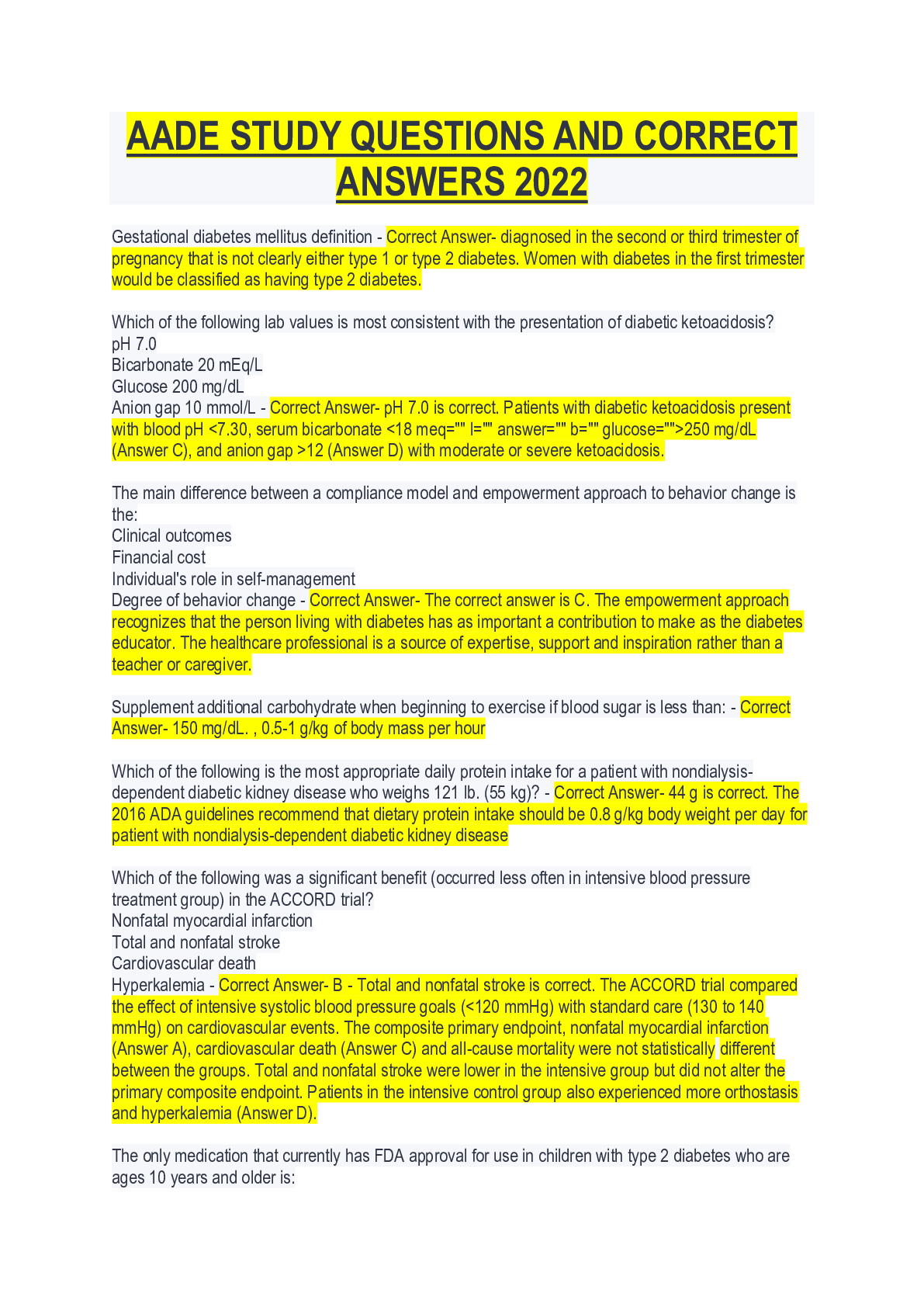
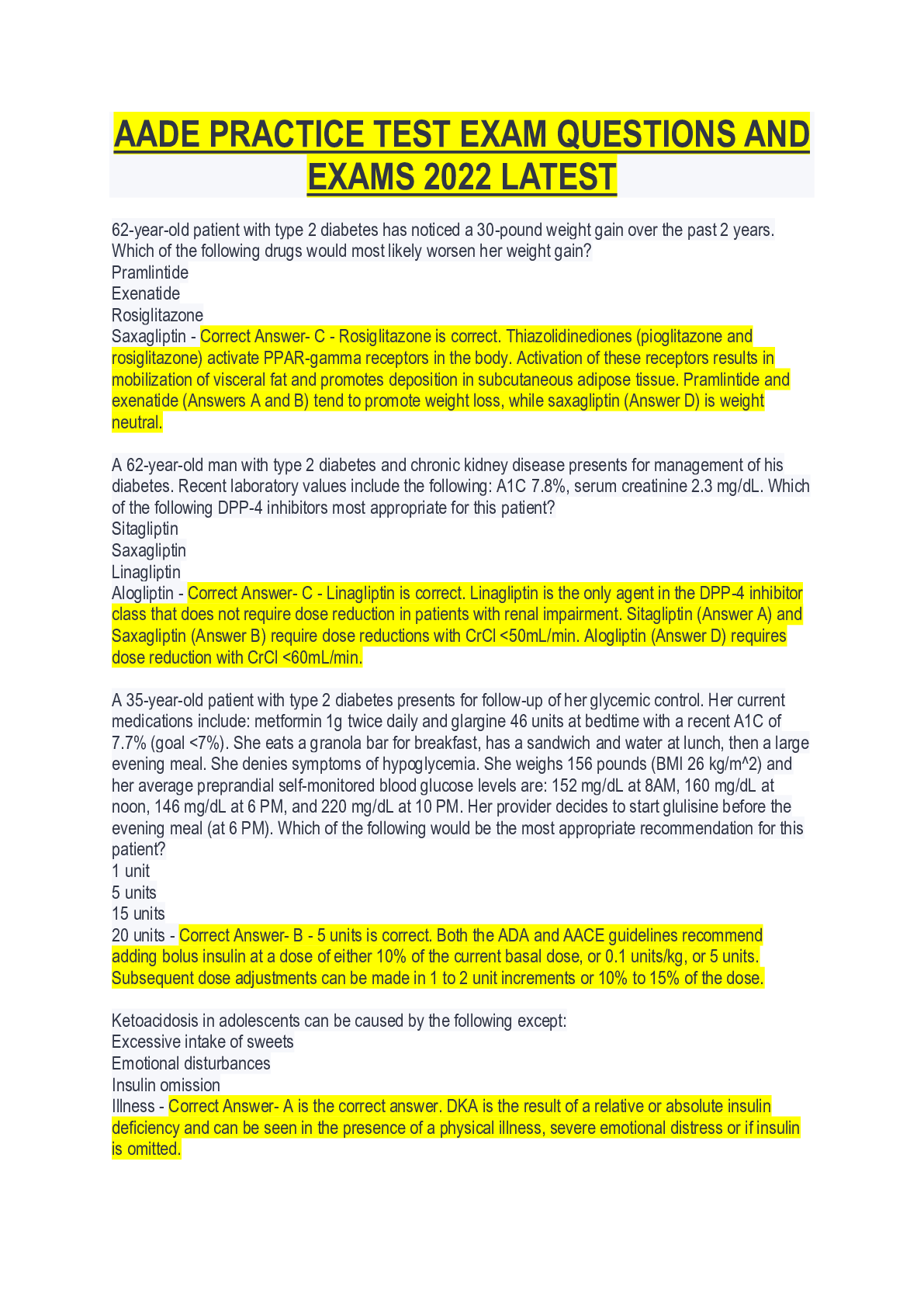
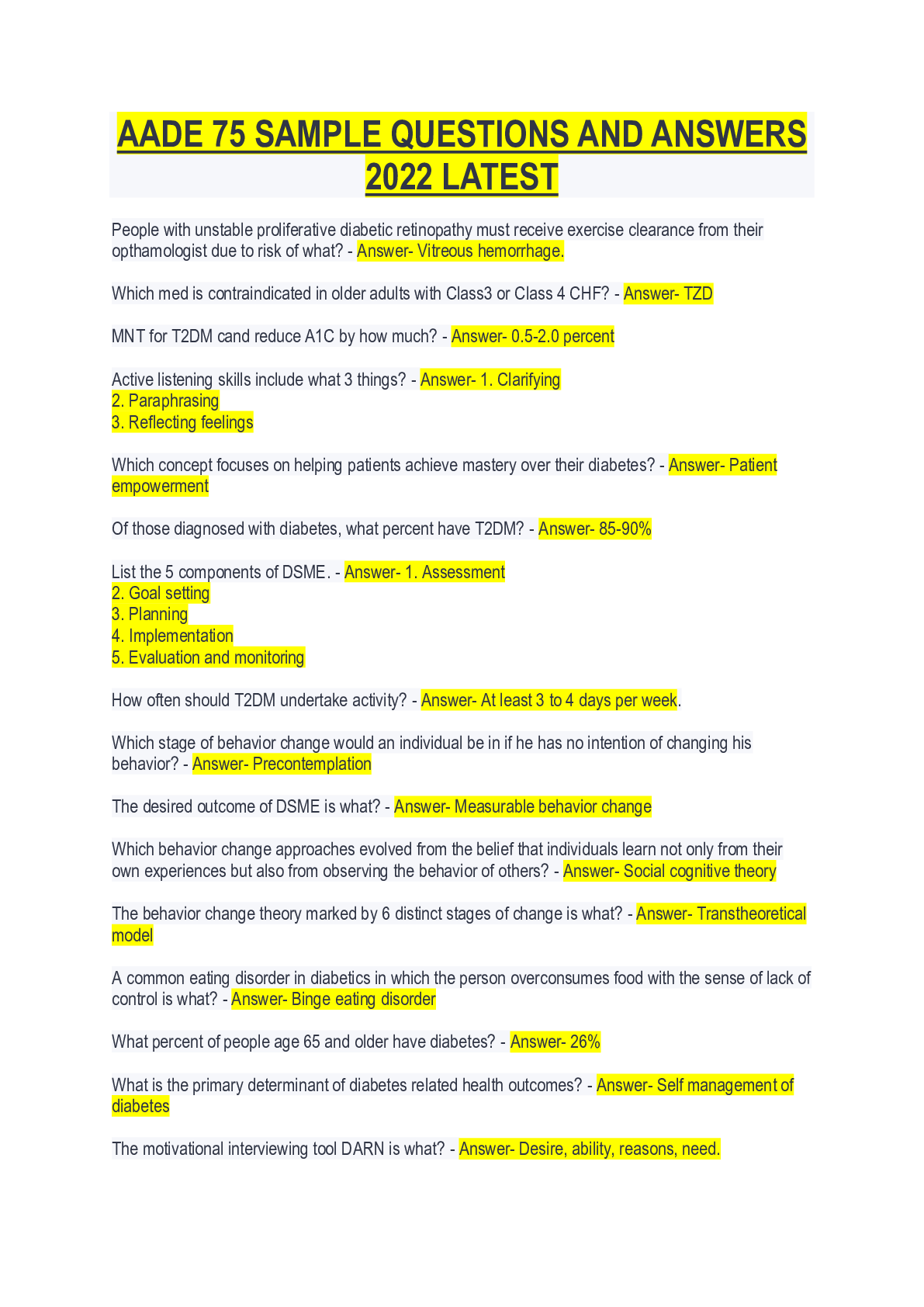


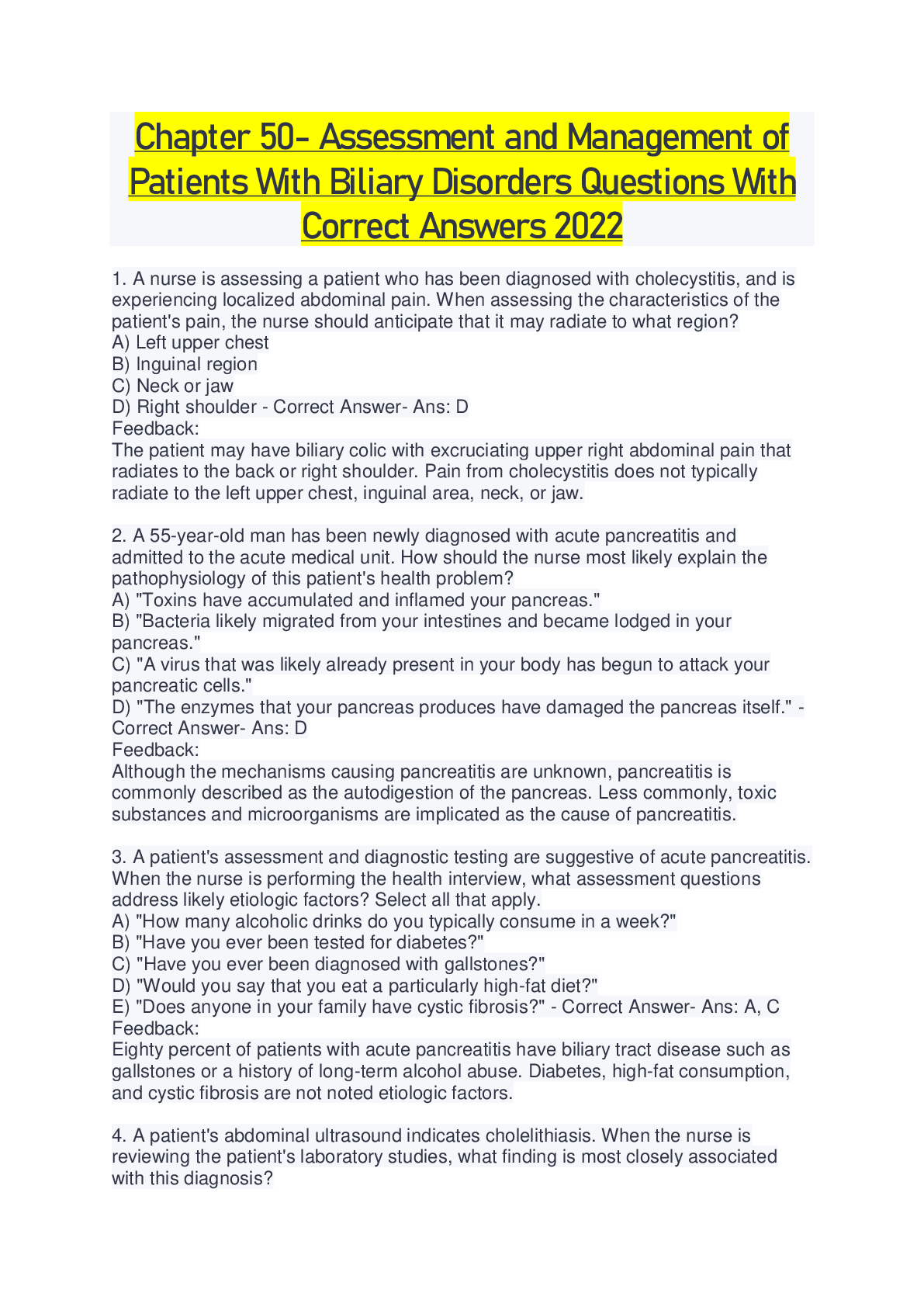
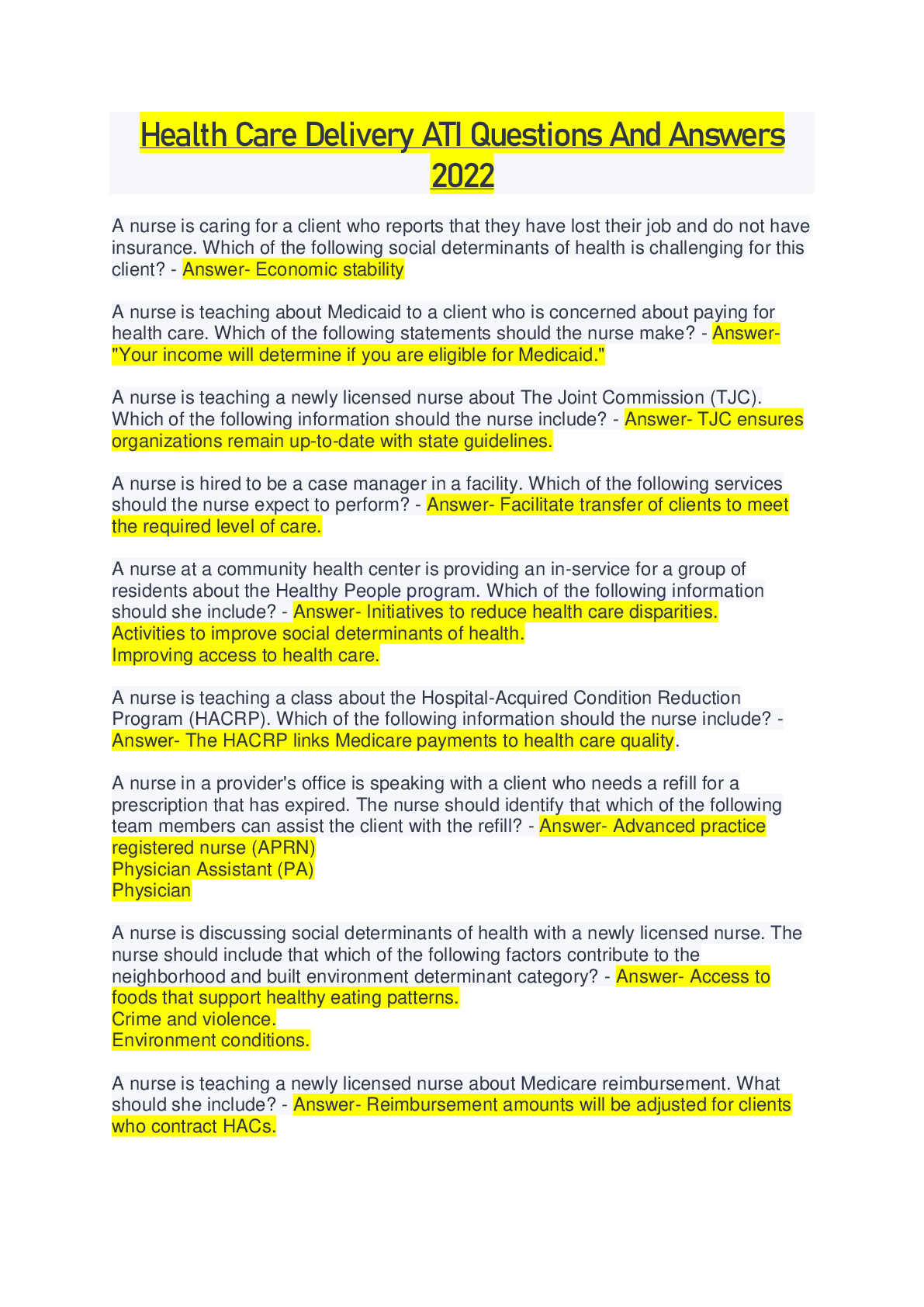

, 100% Correct, Download to Score A.png)
 Download to Score A.png)
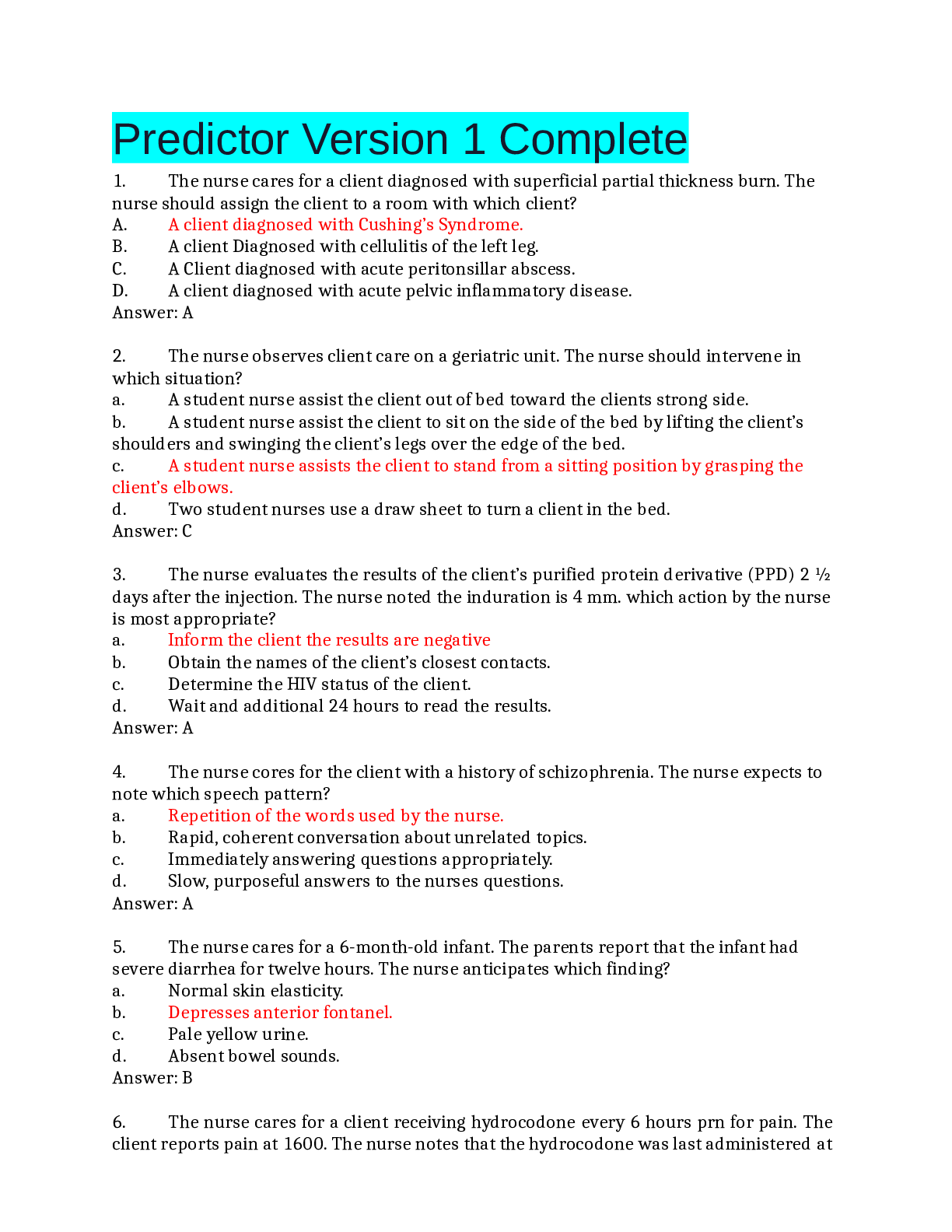
, All Correct, Download to Score A.png)

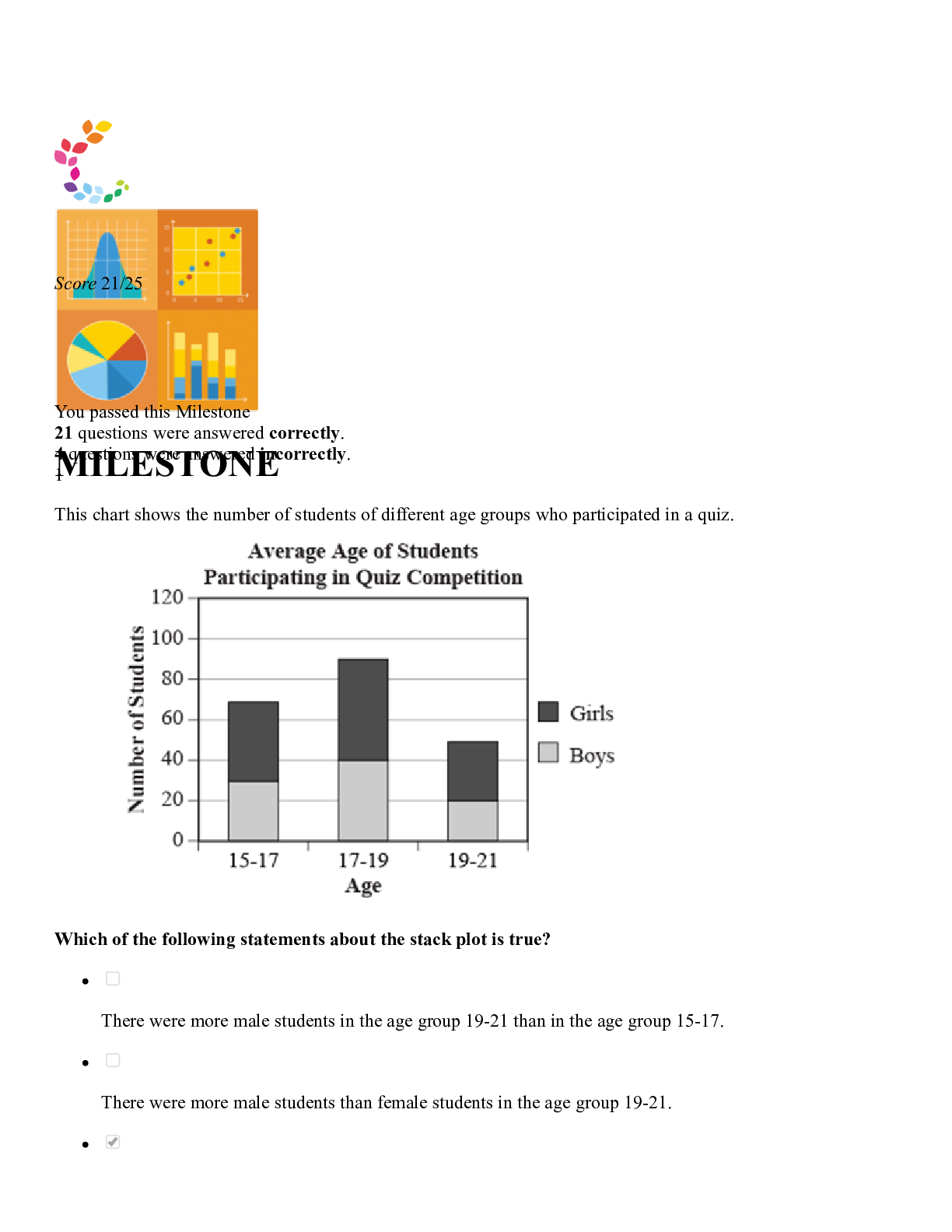

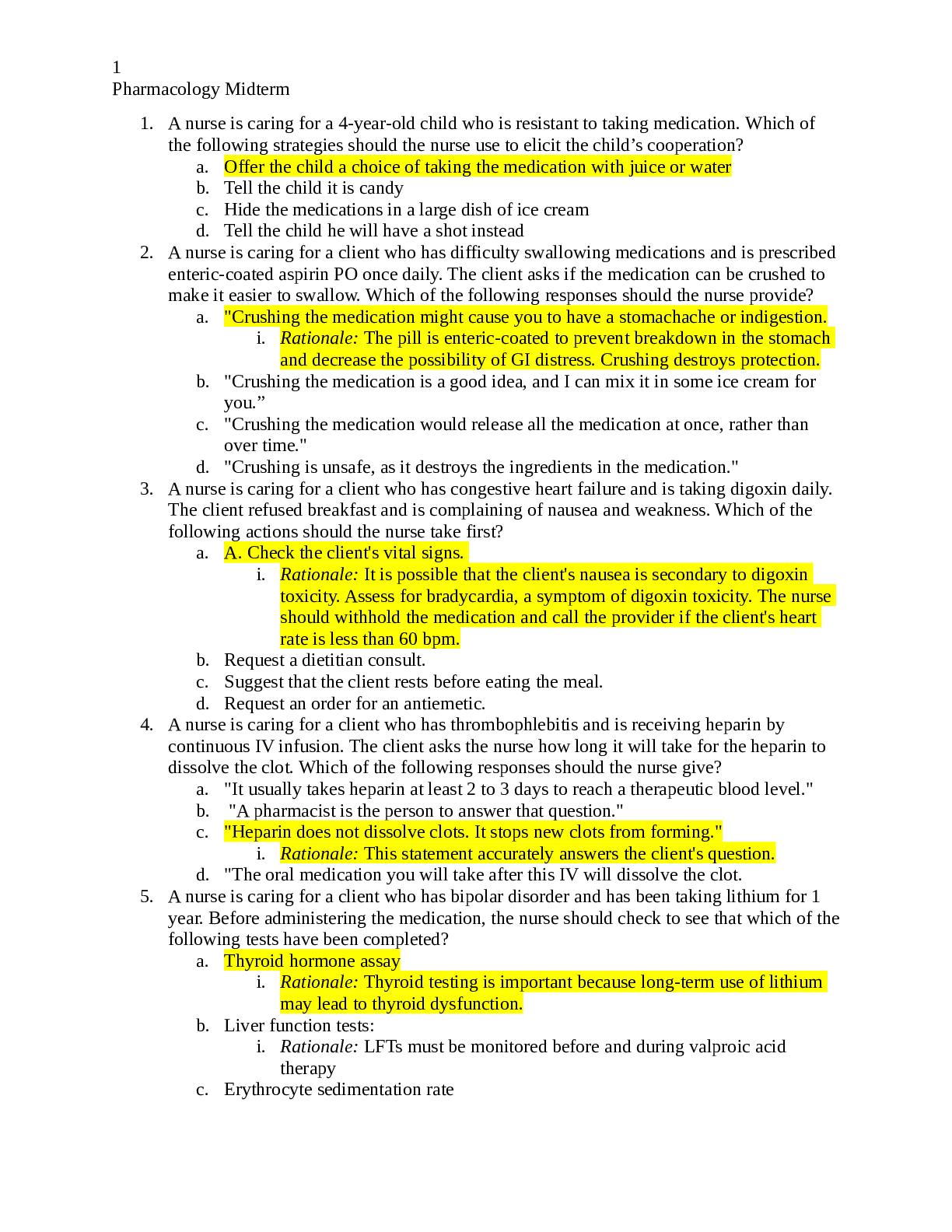
.png)

